Key takeaways:
- Understanding a yacht’s energy needs is essential for comfort, safety, and sustainability, influenced by size, systems, and intended use.
- Energy efficiency enhances luxury experiences, reduces operational costs, and extends the yacht’s range, encouraging exploration of remote ports.
- A variety of energy sources, including diesel, wind, and solar, are available, with alternative options like hybrid systems growing in popularity.
- Accurate assessment of power consumption involves evaluating all onboard systems, utilizing monitoring tools, and considering historical data for better planning.
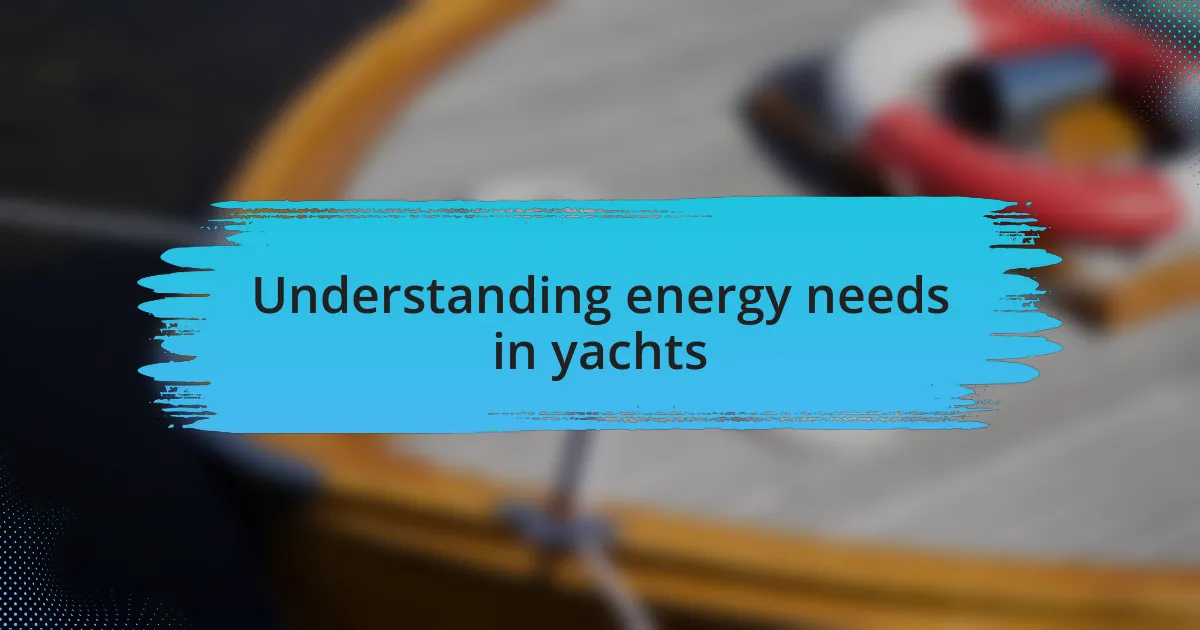
Understanding energy needs in yachts
Understanding the energy needs of a yacht can be a complex, yet fascinating endeavor. From my experience sailing off the coast of Italy, I realized that each vessel’s requirements depend on its size, systems, and intended use. Have you ever wondered how much energy it takes to power all of that luxurious comfort while at sea?
I often think about the intricate balance between energy generation and consumption. The heart of the yacht typically consists of engines, generators, and sometimes solar panels, all working harmoniously to meet daily demands. For instance, during my last trip, we used a combination of diesel generators and solar panels to keep the air conditioning running and the lights shining bright, even while anchored.
It’s crucial to assess not just the immediate energy requirements but also the long-term needs of the yacht. I remember feeling a twinge of anxiety during one journey when our generator faced an unexpected issue. It made me realize that understanding energy needs isn’t just about comfort; it’s also about ensuring safety and sustainability at sea. How prepared are you to tackle similar challenges?
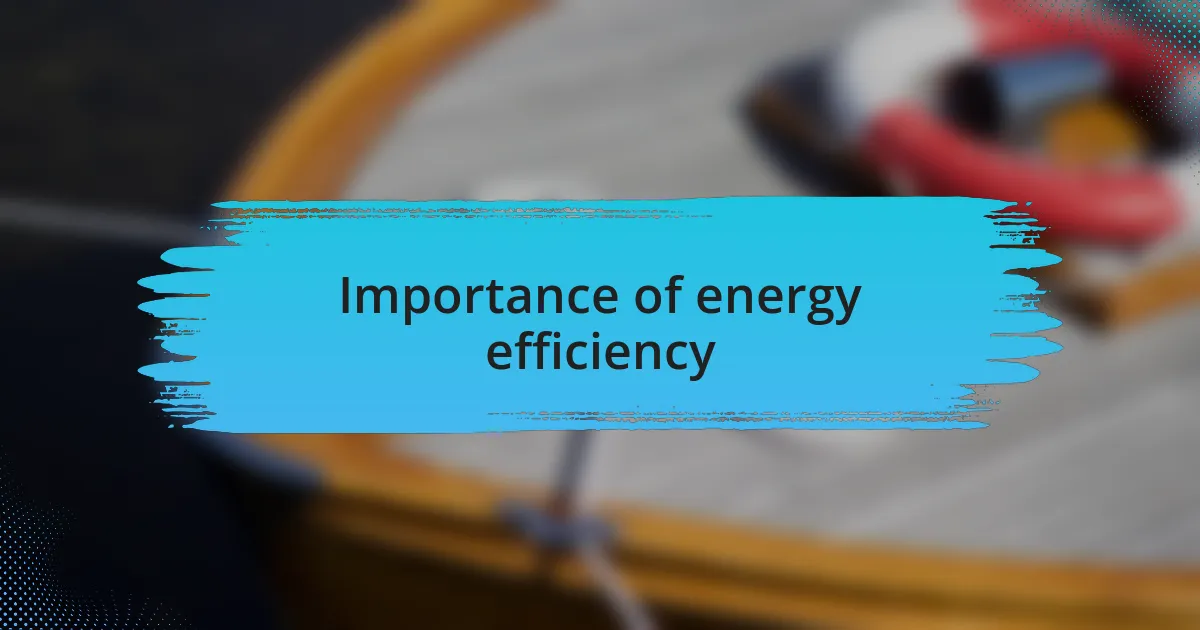
Importance of energy efficiency
Energy efficiency plays a critical role in enhancing the luxury experience aboard a yacht. I vividly remember my first time on a charter yacht equipped with state-of-the-art energy-efficient systems. The tranquility of sailing was only amplified by knowing we were minimizing our environmental footprint. Have you ever considered how much smoother a journey feels when you’re not constantly worrying about fuel consumption?
When energy efficiency is prioritized, it not only reduces operational expenses but also extends the yacht’s range. On my last long-distance journey, we implemented fuel-efficient navigation strategies, which ultimately allowed us to explore more remote ports than initially planned. Isn’t it exciting to think about the adventures that await when efficiency opens up new horizons?
Moreover, energy efficiency contributes significantly to the onboard comfort and experience. During a summer cruise, we relied heavily on efficient climate control systems that kept the yacht cool without guzzling fuel. This experience underscored just how essential it is to invest in energy-efficient upgrades. How much better could your time on the water be if you knew every system was functioning at its best?

Types of energy sources available
Energy sources available for luxury yachts can vary significantly, providing options tailored to different preferences and needs. One prevalent source is diesel fuel, which many traditional yachts rely on for propulsion. I remember taking a trip on a classic motor yacht where the deep rumble of the engines was both thrilling and comforting. There’s something about the sound of power that stirs excitement, right?
Then, we have wind energy, harnessed through sails for those who savor the classic yachting experience. I’ve had moments where gliding silently across the water, propelled only by the wind, gave me a profound sense of connection to nature. Have you ever felt that exhilarating rush as the sails catch the breeze, propelling you forward? It’s a reminder of the simplicity and beauty of sailing.
Lastly, there’s a growing trend towards alternative energy sources, such as solar panels and hybrid systems. I once participated in a test cruise on a hybrid yacht that used solar energy to power many onboard systems. It was remarkable to see how much energy could be stored from the sun while cruising. Can you imagine basking in the glow of the sun while knowing you’re harnessing that energy for an eco-friendly adventure? The possibilities for blending luxury and sustainability are truly exciting.
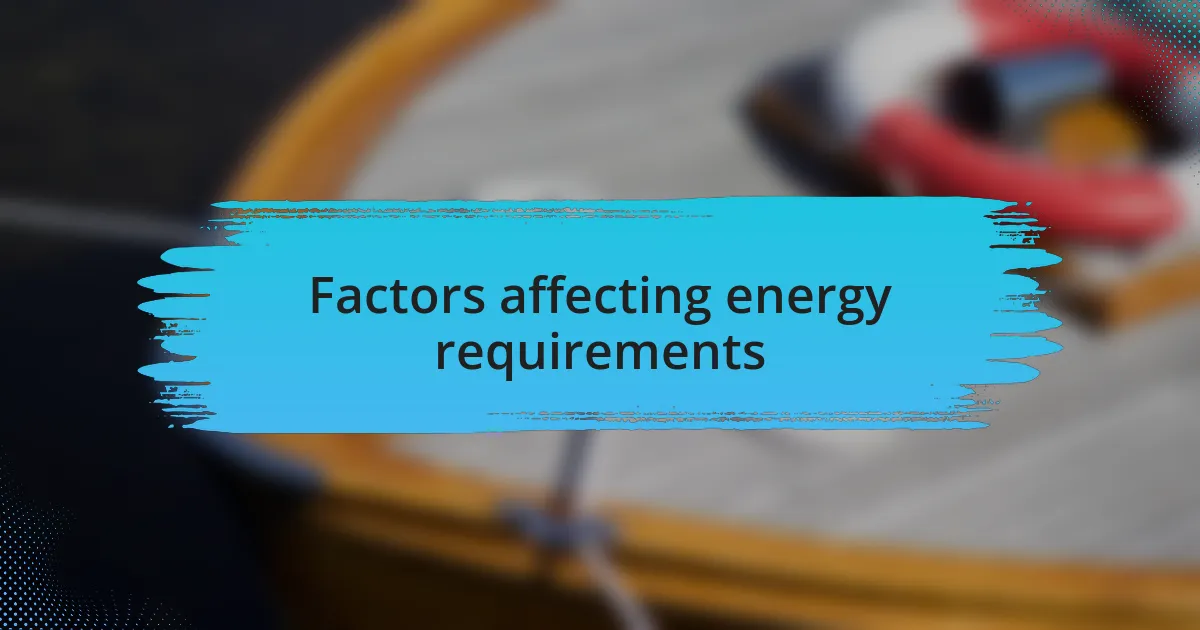
Factors affecting energy requirements
Several factors play a crucial role in determining a yacht’s energy requirements. One significant aspect is the size and weight of the vessel. For example, on a larger yacht I once cruised, the intricate design and luxury amenities required a considerable amount of energy just to keep everything running smoothly. Have you ever considered how much more energy it takes to maintain lavish features like heated pools or extensive entertainment systems?
Another key factor is the cruising speed. When I embarked on a fast-paced trip, I noticed how quickly the fuel consumption ramped up. It struck me that if you’re looking to zip across the waves, you’ll pay a price in energy usage. This makes me wonder: do we often prioritize speed over sustainability when out on the open water?
Weather conditions also have a significant impact on energy needs. I recall one stormy day at sea when the winds were against us. Our captain had to adjust our energy strategy, emphasizing propulsion over amenities to keep us safe. It really brought home the idea that external conditions can dramatically shift how we assess our energy needs. How prepared are we to adapt in the face of nature’s unpredictability?
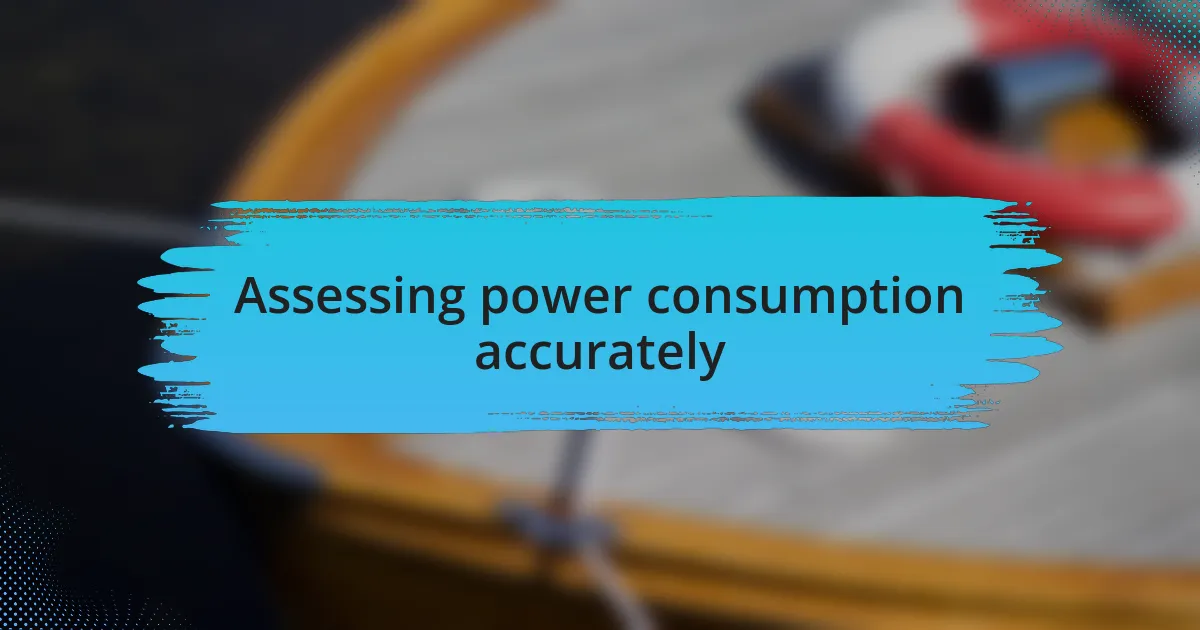
Assessing power consumption accurately
Accurate assessment of power consumption starts with a thorough evaluation of all onboard systems. I remember a trip where we meticulously counted every appliance’s draw, from the ice maker to the lighting. It was eye-opening to see how little changes, like using LED bulbs instead of traditional ones, could drastically reduce our overall energy needs. Have you ever taken a close look at the little things that add up?
In my experience, using energy monitoring tools has been invaluable. On one yacht, we installed real-time metering that provided instant feedback on our consumption rates. This allowed us to make on-the-fly adjustments that not only optimized our energy use but also enhanced our overall experience at sea. Isn’t it interesting how technology can so effectively guide our habits toward better energy efficiency?
Furthermore, considering the duration of power requirements can greatly affect assessments. While cruising for longer periods, I learned to balance our energy needs with the reserve capacity to avoid surprises, like running out of power just before sunset. What if we spent a bit more time on planning not just for immediate needs, but for the entire journey? This proactive mindset can transform our onboard experience from reactive to harmonious.
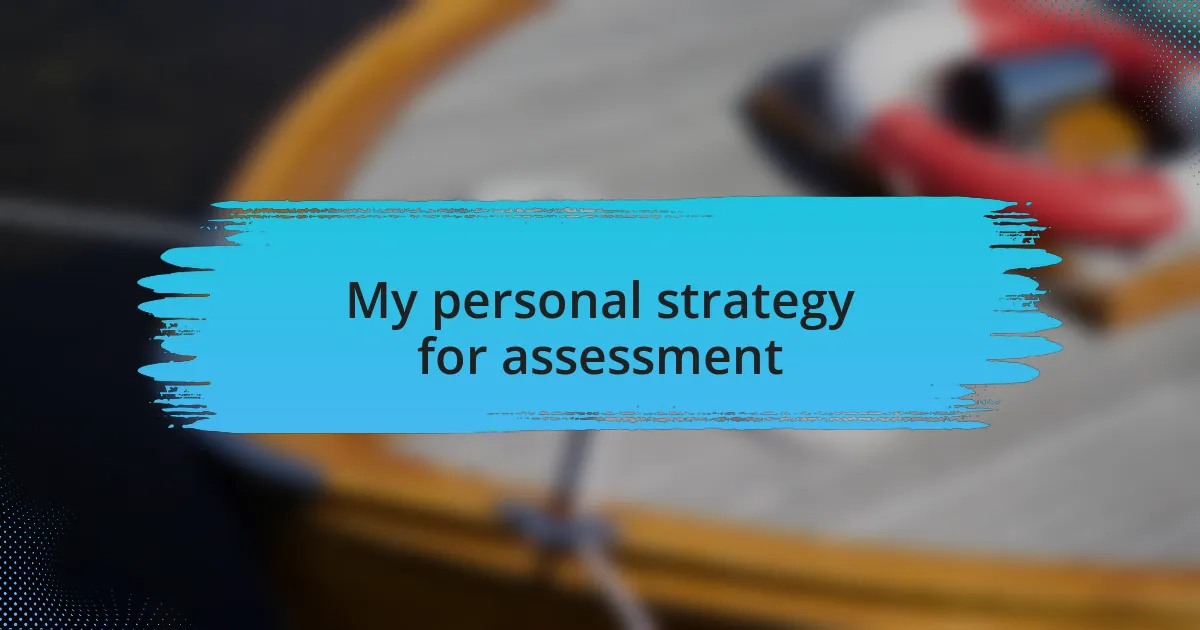
My personal strategy for assessment
When I assess energy needs, I start with a comprehensive inventory of all equipment, calculating their energy draw individually. On my last voyage, I vividly remember how enlightening it was to see the actual numbers displayed when we ran the generator against the solar panels. It made me reflect: how often do we underestimate the power requirements of the most common devices onboard?
I also find great value in revisiting past consumption patterns and aligning them with future plans. After one particularly intense sailing season, I reviewed the logs and spotted some surprising trends in usage—certain systems were far more demanding than expected during peak hours. Doesn’t it make you wonder what efficiencies could be achieved if we really paid attention to our historical data?
Additionally, I prioritize crew involvement in this assessment process. Recently, I encouraged everyone on board to share their experiences regarding how they interacted with our energy systems. This not only fostered a sense of teamwork but also uncovered insights I would have missed otherwise. How powerful it is when everyone takes ownership—wouldn’t you agree that collaboration can lead to unexpected solutions?